Emergency Preparedness for Special Needs Kids
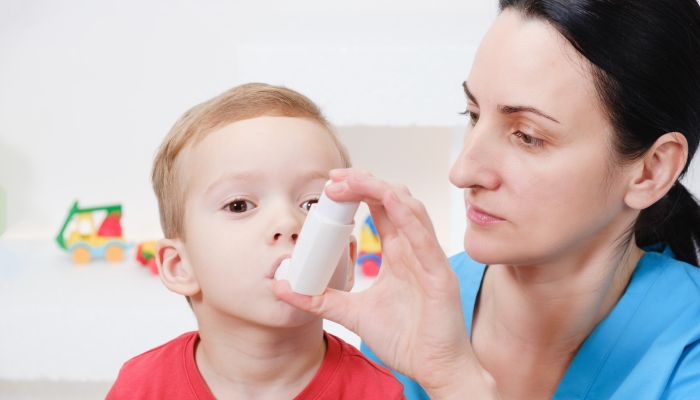
- An emergency situation could be anything from a flood to a terrorist attack, so you need to think outside the box when disaster planning for an emergency.
- Emergency preparedness can make a huge difference in an emergency situation.
- Knowing what you will do and having an emergency kit to hand can save you valuable time in a disaster.
- Consider your child’s unique needs and what you might all need during an emergency situation to ensure you have a well-packed emergency kit.
Nobody likes to think about the what-ifs, but doing so could keep your family safe and calm during an emergency. While it may not be fun going through a huge list of horrors that could befall your family, it’s a worthwhile task that will pay off if an emergency ever arises (which hopefully it won’t).
Special needs emergency planning is particularly important because it ensures you have everything in place to continue to meet your child’s needs during an emergency. Whether this emergency is a hurricane or a local power outage, emergency preparedness ensures you have everything you need for your child.
As a family with additional needs, you’ll need to consider things like accessible transportation, access and functional needs, and medical alert tags, as well as the basic survival supplies needed by most families.
Understanding Special Needs and Emergencies
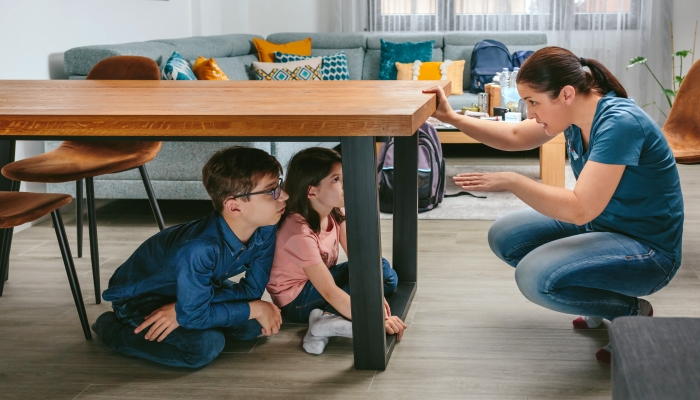
There is no one-size-fits-all for children with additional needs. The term special needs covers a whole range of topics, including physical disabilities, developmental disabilities, behavioral disorders, and sensory impairments. When it comes to emergency management, plan for your child’s individual needs and consider the impact an emergency situation might have on your family.
Though it might not be fun to create a list of disasters that may impact your family, emergency management is necessary for families of children with additional needs. Here are some examples of emergency situations you should prepare for just in case:
Natural Disasters
These are often caused by extreme weather conditions. Floods, hurricanes, tornadoes, heatwaves, and wildfires are all weather disasters you should consider. Consider your location; some homes are more at risk than others to forest fires and hurricanes, for example. Earthquakes are another natural disaster it’s crucial to prepare for, especially if you live in an area known for earthquakes.
Man-made Disasters
It’s also important to prepare for these, too. These could include fires, chemical spills, war, and terrorist attacks. Though some of these disasters may seem farfetched in your sleepy town, it’s worth planning for how you will safely evacuate your family in an emergency.
Medical Emergencies
As a family with a child with additional needs, you are likely already familiar with medical emergencies. Your child may have experienced seizures, allergic reactions, problems with their medical equipment, and medical emergencies unique to their health conditions. For medical emergency planning, it’s worth speaking to your child’s medical team to ensure you have everything you need in case disaster strikes.
Risk Assessment and Planning
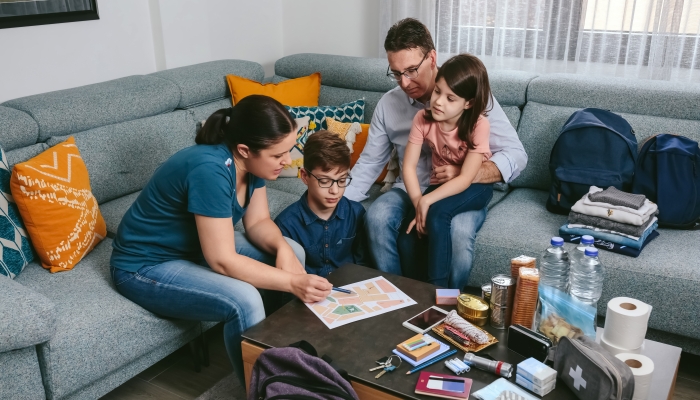
Regarding emergency preparedness, it’s crucial to risk assess potential emergencies and ensure you have a plan in place for each. A 2013 study11. Baker, L. R., & Baker, M. D.. Disaster Preparedness Among Families of Children With Special Health Care Needs. Disaster Medicine and Public Health Preparedness. 2010;4(3), 240–245. https://doi.org/10.1001/dmp.2010.28 found that many families of children with additional needs were unprepared for emergency situations. Preparing for an emergency could make a huge difference to you and your child, so please do plan for the worst.
Identify Risks
To ensure you have all bases covered, you should:
- Create a list of potential medical emergencies associated with your child’s additional needs. You may need to speak to your child’s medical team at this point to ensure you have identified all possible emergencies.
- Evaluate environmental risks near your home. Consider potential emergencies when out and about, too. When planning a vacation, it’s important to think about the different weather emergencies and other disasters applied to your vacation resort.
Develop an Emergency Plan
Once you’ve identified the risks, it’s time to develop an emergency plan that will keep you and your family safe in the unlikely event of a disaster. When planning your family emergency plan, you should:
- Sign up for emergency alerts to ensure you are notified in good time. Contact your local emergency management office to ask if they have a list of people with disabilities who may require targeted assistance in the case of an emergency. Ensure your child is on the list and your contact details are up-to-date.
- Collaborate with your personal support network, including family members, caregivers, and medical providers, to ensure you have the help of your support network in an emergency.
- Consider the child’s daily routines, medications, and equipment. In the case of a serious disaster, you may not have access to medical help for days; consider how this would impact your family and what you may need in place to cope.
- Assign roles and responsibilities to your immediate support network. In an emergency situation, having all hands on deck will take some of the stress off your shoulders.
- Regularly review and update the plan. With changing weather conditions, updated terror risks, and changes in your child’s medical status, you must regularly review your emergency plan to ensure it is still relevant.
- Do a training drill so that everybody knows what to expect. Ensure each family member knows what they need to do in the event of different emergencies.
- Plan your escape routes in advance. You should figure out how to safely evacuate from each room of your home. As well as this, you need to plan how you would leave your hometown in an emergency situation. If you need accessible transport, this is something you should look into now.
- Prepare your home in case you need to shelter in place. Stock up with canned goods and other long-lasting foods, and ensure you have a way of cooking them in case of a power outage.
Creating an Emergency Kit
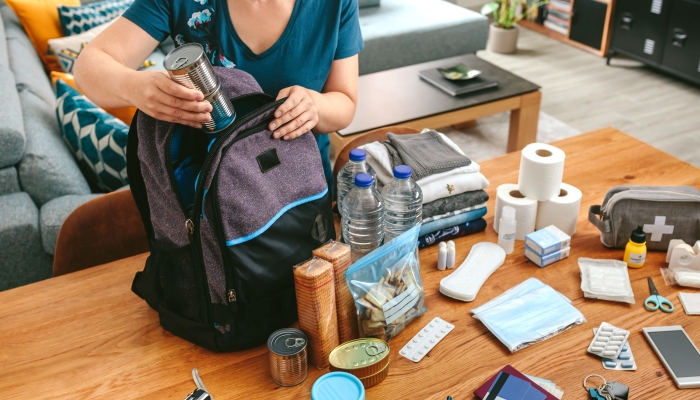
To prepare for an emergency, create an emergency kit that contains all the emergency supplies you’ll need in the case of a disaster. Store this kit in a waterproof container somewhere safe. Ideally, it should be close to the front door so you can grab it easily on your way out.
Essential Items
Your emergency supply kit should include:
- Medications and medical equipment. Try to imagine what your family would need to survive for a few days without help, and ensure you have enough medical supplies to see you through.
- Food and water. Cereal bars, high protein snacks, and foods with a long use-by date are perfect for this. Ensure you have water bottles, too, for if the water supply is affected.
- Important documents. Pack your child’s medical records, as well as identification documents for the whole family. Keep a list of important phone numbers and your contact list handy, too.
- Flashlight with extra batteries.
- Personal care items.
- Battery-powered radio.
- Battery charger. A battery charger and the right leads will keep your phones in charge so you can call for help in an emergency. Always have a charged battery pack ready to power your communication devices in case of a power outage.
Special Needs Specific Items
You need to ensure your emergency pack covers all eventualities, which means packing items to meet your child’s needs.
| Communication Tools | If your child’s communication skills are limited, you’ll definitely want to pack the picture cards and communication aids you use at home. Not only will this help your child communicate with you, but it can also be used to communicate with aid workers. |
| Sensory Items | You won’t have much control over your environment in an emergency situation. You may end up housed in a crowded community center overnight, for example, so think of ways you can reduce the sensory overload to avoid a sensory meltdown. Noise-canceling headphones, eyemasks to block out light, and fidget toys to distract, for example, may lessen the stress of unfamiliar environments. |
| Comfort Items | Don’t underestimate the need for comfort in times of stress. If your child has a favorite blanket or toy that gives them comfort, make sure this is taken with you in case of emergency. |
Post-Emergency Measures
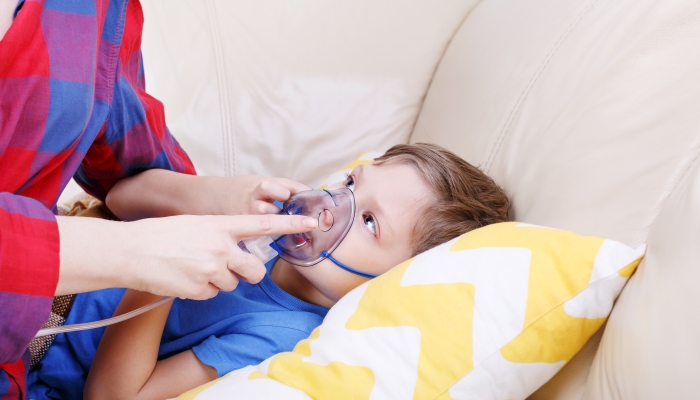
If you’re unlucky enough to experience an emergency situation, you’ll need to ensure your child receives the necessary medical support. If you’re housed in temporary accommodation for the night, there will usually be emergency personnel and medical personnel on hand to provide support at these emergency shelters.
In the event of an emergency, ensure you contact any emergency helplines set up and explain your child’s medical needs. You should be put on a priority list for medical assistance and support for people with disabilities.
Reference
- Baker, L. R., & Baker, M. D. (2010). Disaster Preparedness Among Families of Children With Special Health Care Needs. Disaster Medicine and Public Health Preparedness, 4(3), 240–245. https://doi.org/10.1001/dmp.2010.28
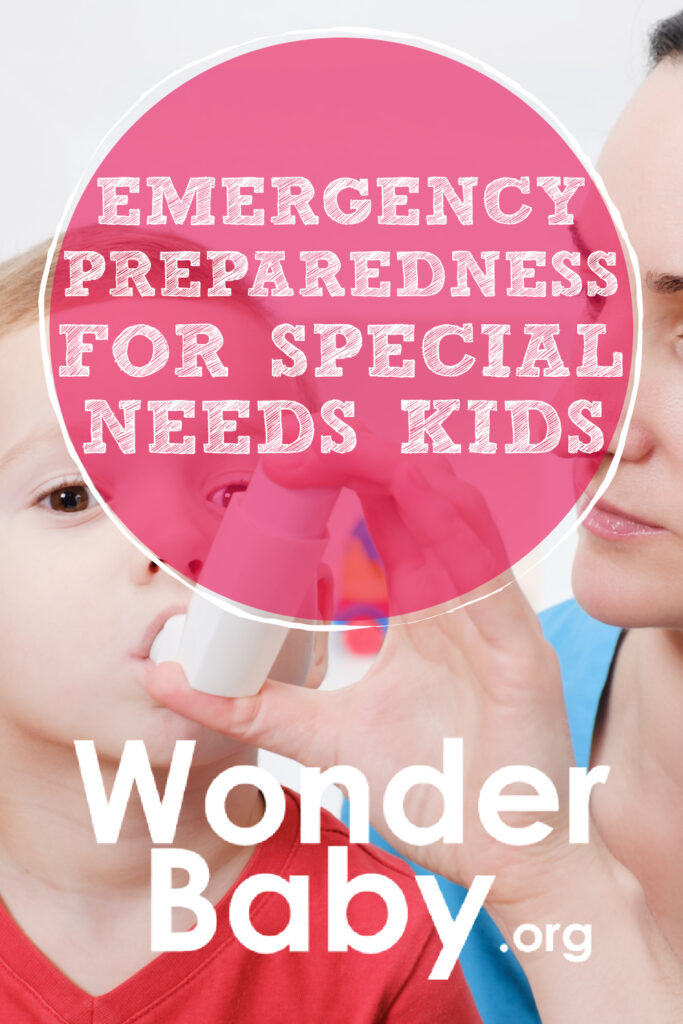
Related Posts

Eye Conditions and Syndromes, Visual Impairment
Neuralink Announces Plans to Restore Sight to the Blind with Brain Chip
Elon Musk’s company Neuralink has announced plans to begin human trials of its new “Blindsight” brain chip by the end of 2025.

Special Needs
5 Spring Cleaning Tips for Families of Children with Disabilities
Spring cleaning is an opportunity to create a more accessible, organized, and supportive space for your child with disabilities. Declutter, deep clean, and refresh!

Visual Impairment
The Gift of Understanding: How a Young Child Helps His Blind Father Navigate Life
When a parent is blind, it’s natural for people to wonder how their sighted child will adapt. Will they struggle to understand their parent’s needs? Will they feel burdened by...